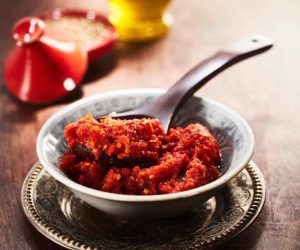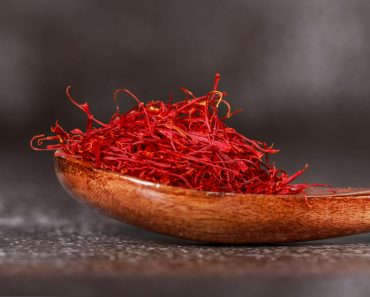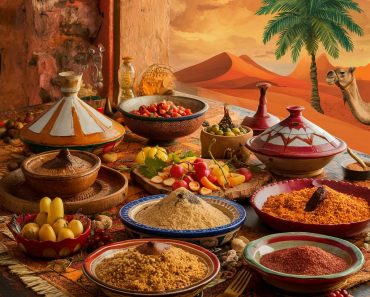“Fiery Flavor: Exploring Morocco’s Iconic Harissa”

HARISSA OF MOROCCO
Harissa originates from North Africa and is a hot paste/sauce that mainly contains chili pepper, red pepper, garlic, salt and olive oil. Throughout North Africa you will find many types of harissa depending on the region (or family) since some recipes include herbs and spices.
Traditionally, harissa is made from sun-dried chili peppers drizzled with olive oil, creating a charming and fierce paste. The word “harissa” comes from the Arabic word “harissa,” which refers to the process of crushing dried chili peppers.
The main ingredient in harissa – hot pepper – appeared on Moroccan soil in the sixteenth century. The most recent buzz about chili sauce is the result of three factors in North Africa: the arrival of chili peppers from Spain, an abundance of sunshine, and countless olive trees!
In Morocco, we mainly like harissa, and we usually don’t add a lot of herbs and spices in the recipe so that we can add it to any meal without a taste clash. Well, that’s what my mom said
Harissa Of Morocco is a vibrant and aromatic Moroccan chili paste that adds a burst of spicy, smoky, and slightly tangy flavors to dishes. It typically features a rich red color, derived from a blend of dried red chili peppers, garlic, olive oil, and spices like cumin, coriander, and caraway seeds. The paste is known for its versatile use in North African cuisine, where it serves as a staple condiment and flavor enhancer.
Harissa’s heat level can vary depending on the type and amount of chili peppers used, ranging from mild to intensely fiery. Its complex flavor profile combines the earthiness of the spices with the robustness of the peppers, creating a deeply satisfying taste experience. The garlic adds a pungent kick, while the olive oil helps mellow and bind the ingredients together.
In Moroccan cooking, Harissa is often used as a marinade for meats, poultry, and seafood, lending them a spicy and aromatic kick before grilling or roasting. It’s also stirred into stews, soups, and tagines, infusing the dishes with its bold flavors. Additionally, Harissa can be spread on bread or used as a dipping sauce for vegetables, adding zing to snacks and appetizers.
Overall, Harissa’s distinctive blend of heat and spices makes it a beloved and indispensable element of Moroccan cuisine, elevating dishes with its fiery charm and enticing aroma.
- Spicy Harissa : A variation of Harissa that emphasizes the heat, typically achieved by using hotter chili peppers or increasing their quantity. Ideal for those who enjoy a fiery kick in their dishes.
- Mild Harissa Of Morocco : This version of Harissa is milder in heat, making it suitable for those who prefer a gentler spice level. It retains the flavorful essence of traditional Harissa without overwhelming spiciness.
- Herbed Harissa Of Morocco : Incorporates fresh herbs like cilantro, parsley, or mint into the traditional Harissa blend, adding a vibrant green color and an herbal undertone to the spicy paste. It’s a refreshing twist on the classic recipe.
- Preserved Lemon Harissa: Includes preserved or pickled lemon peel in the Harissa mixture, offering a tangy and citrusy note that complements the spiciness. This variation adds a bright, zesty flavor to dishes.
- Smoked Harissa : Made by incorporating smoked chili peppers or adding smoked paprika to the traditional recipe, resulting in a deep, smoky flavor that enhances grilled or roasted dishes exceptionally well.
- Sweet Harissa : Combines the heat of traditional Harissa with a touch of sweetness, often achieved by adding ingredients like honey, dates, or roasted bell peppers. This version provides a delightful balance of spicy and sweet notes.
Each type of Harissa brings its unique character to dishes, allowing for versatile use in various cuisines and culinary creations.
Harissa comes in a range of colors, each indicative of its flavor profile and ingredients. Here are some top descriptions for Harissa colors:
-
Deep Red Harissa Of Morocco :
This vibrant hue is the hallmark of traditional Harissa, showcasing its intense spiciness and rich blend of dried red chili peppers, garlic, and aromatic spices like cumin and coriander. The deep red color signals a bold and robust flavor profile, perfect for adding heat and depth to dishes.

-
Fiery Orange Harissa:
A variation of Harissa that leans towards a fiery orange color, often achieved by using hotter chili peppers or increasing the quantity of chili in the recipe. This color hints at a more intense heat level, appealing to those who crave a spicy kick in their meals.
-
Bright Green Harissa:
Incorporates fresh herbs like cilantro, parsley, or mint into the Harissa mixture, resulting in a vibrant green color. This version of Harissa offers a refreshing herbal twist to the traditional spicy paste, adding a lively and aromatic element to dishes.
-
Smoky Brown Harissa:
Created by incorporating smoked chili peppers or smoked paprika into the Harissa blend, leading to a smoky brown color. This Harissa variety imparts a deep, smoky flavor that complements grilled or roasted dishes exceptionally well, adding complexity and depth to the flavor profile.
-
Golden Yellow Harissa Of Morocco :
Infused with ingredients like turmeric, yellow chili peppers, or saffron, resulting in a golden yellow color. This Harissa variation brings a subtle warmth and a hint of earthiness to dishes, making it a unique choice for those looking for a different flavor experience.
-
Harissa Of Morocco Rich Maroon :
Achieved by adding ingredients like roasted red bell peppers or pomegranate molasses to the Harissa mixture, giving it a rich maroon color. This version of Harissa combines spicy and sweet notes, offering a complex and indulgent flavor profile that pairs well with a variety of foods.
Each color variation of Harissa offers a distinct taste experience, allowing for versatility in cooking and catering to different flavor preferences.
Harissa offers a range of benefits that make it not only a flavorful addition to dishes but also a healthy choice.
Firstly, it contains capsaicin, a compound found in chili peppers that is known for its potential to boost metabolism and aid in weight management. Additionally, capsaicin may have anti-inflammatory properties and could help alleviate pain. Harissa also contains garlic, which is rich in antioxidants and has antimicrobial properties that can support immune health. Olive oil, another key ingredient in Harissa, is a source of healthy monounsaturated fats and may contribute to heart health. Moreover, the spices like cumin and coriander used in Harissa are often associated with digestive benefits and may help improve gut health. Overall, incorporating Harissa into meals can not only enhance flavor but also provide a range of potential health advantages.





